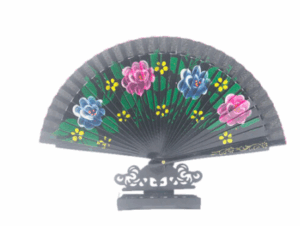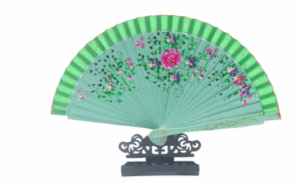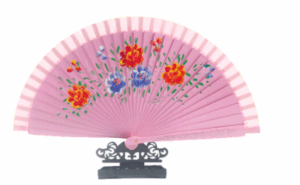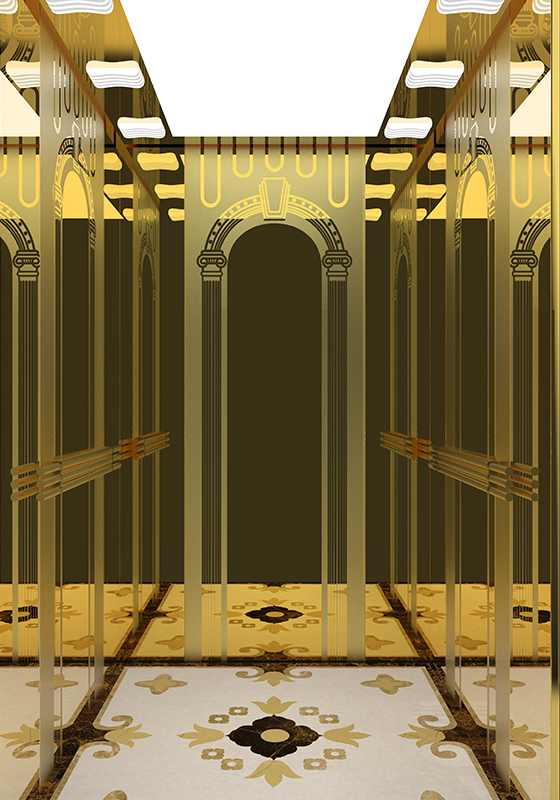Spanish hand fans are not only practical tools for cooling but also carry a rich cultural history and artistic expression. From elegant gestures in dance to personal comfort in warm climates, Spanish hand fans offer versatility and style. Proper use and care of these fans ensure they remain both functional and decorative for years. This article explores the types, handling techniques, and aesthetic applications of Spanish hand fans, while providing guidance on maintaining their quality.
 Light Green Double-Sided Hand-Painted Floral Wood Fan: Features a fusion of hibiscus and violet flowers, blending Eastern and Western design aesthetics.
Light Green Double-Sided Hand-Painted Floral Wood Fan: Features a fusion of hibiscus and violet flowers, blending Eastern and Western design aesthetics.
 Pink Double-Sided Five-Flower Begonia Spanish Wood Fan: Balances traditional and modern design, with soft pink tones and intricate detailing suitable for both practical use and decoration.
Pink Double-Sided Five-Flower Begonia Spanish Wood Fan: Balances traditional and modern design, with soft pink tones and intricate detailing suitable for both practical use and decoration.

I. Understanding Spanish Hand Fans
(1)Historical and Cultural Context
Spanish hand fans, known as "abanicos," have been used for centuries in Spain and other Mediterranean countries. Traditionally, they serve both practical and symbolic purposes. In addition to providing a cooling breeze, fans historically functioned as tools for silent communication, especially in social and courtship settings. Their designs often reflect local artistry, with intricate patterns and vibrant colors conveying cultural narratives.(2)Components of a Spanish Hand Fan
A standard Spanish hand fan consists of three main parts:- Ribs: The supporting structure, typically crafted from wood, bamboo, or plastic, provides stability. Quality fans often have 20–30 ribs for a balance of strength and flexibility.
- Leaf or Fabric: Made from materials such as silk, cotton, or paper, the leaf carries painted or printed designs, enhancing both beauty and cultural value.
- Guard Sticks: The outermost ribs that protect the fan when folded. Durable guard sticks ensure longevity and ease of use.
(3)Types of Spanish Hand Fans
Among the wide variety of Spanish hand fans, three particular designs exemplify different artistic styles: Black Hand-Painted Multicolor Rose Spanish Wood Fan: Combines artistry with elegance, crafted from high-quality wood and adorned with vibrant rose motifs. Light Green Double-Sided Hand-Painted Floral Wood Fan: Features a fusion of hibiscus and violet flowers, blending Eastern and Western design aesthetics.
Light Green Double-Sided Hand-Painted Floral Wood Fan: Features a fusion of hibiscus and violet flowers, blending Eastern and Western design aesthetics.
 Pink Double-Sided Five-Flower Begonia Spanish Wood Fan: Balances traditional and modern design, with soft pink tones and intricate detailing suitable for both practical use and decoration.
Pink Double-Sided Five-Flower Begonia Spanish Wood Fan: Balances traditional and modern design, with soft pink tones and intricate detailing suitable for both practical use and decoration.

II. How to Use Spanish Hand Fans
(1)Basic Handling Techniques
Proper handling is essential for maximizing both comfort and fan longevity:- Opening and Closing: Hold the guard sticks firmly and open the fan in a smooth, even motion. Avoid forcing the ribs, as this can damage delicate painted surfaces.
- Angle and Direction: For effective cooling, hold the fan at approximately 45 degrees and move it back and forth steadily. This technique circulates air efficiently while reducing strain on the wrist.
- Folding: When not in use, fold the fan gently and store it in a protective sleeve or box to prevent dust accumulation or deformation.
(2)Fan Techniques for Communication
Historically, Spanish hand fans were used to send subtle signals in social contexts. Common gestures include:- Fanning slowly: Indicates calmness or interest.
- Rapid flicks: Express impatience or urgency.
(3)Enhancing Aesthetic and Performance Use
Spanish hand fans are also integral to dance and performance art:- Flamenco Dance: Fans are often incorporated into movements, accentuating rhythm and grace.
- Decorative Display: High-quality fans, such as the black hand-painted multicolor rose fan, can be mounted or displayed as wall art. Using fans in décor adds both color and cultural sophistication to interiors.
III. Maintaining and Caring for Spanish Hand Fans
1)Cleaning and Preservation
Fans should be cleaned regularly to maintain appearance and durability:- Use a soft, dry cloth to remove dust from ribs and fabric.
- Avoid exposure to excessive moisture, which can warp wooden components or cause paint to fade.
- For painted surfaces, gentle brushing or air-blowing is preferred over wiping to prevent damage.
2)Storage Recommendations
Proper storage extends the lifespan of Spanish hand fans:- Store in a vertical position within a fan holder or protective case.
- Keep away from direct sunlight to preserve colors.
- Avoid stacking fans on top of each other to prevent deformation of ribs and fabric.
- Repair and Restoration
IV. Practical Applications and Modern Uses
- Personal Comfort
- Fashion and Accessories
- Cultural and Educational Uses






